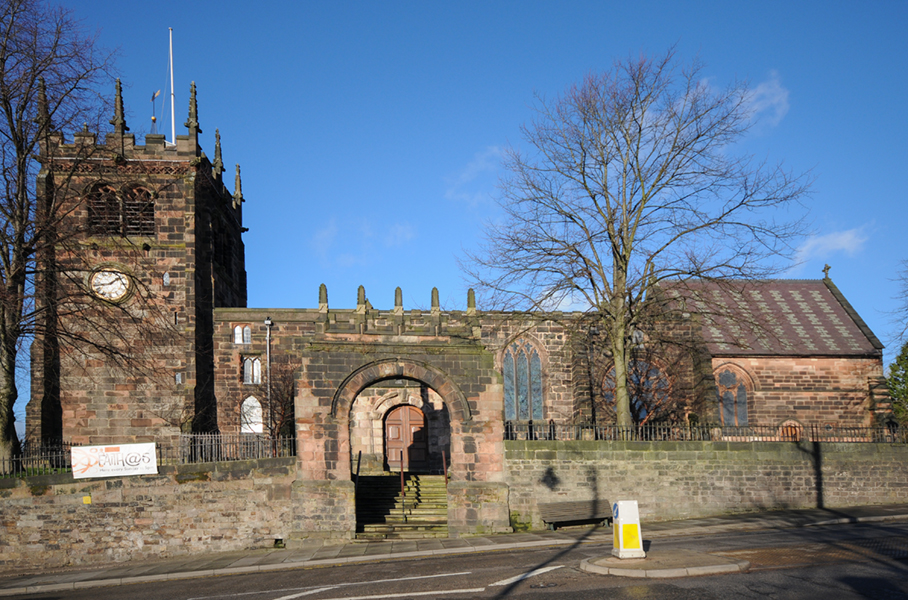 |
| Parish Church of St. Edward the Confessor in Jan 2014. |
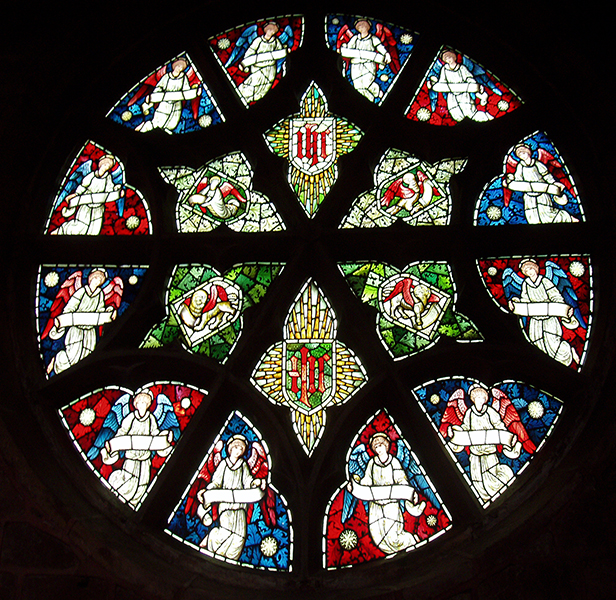 |
| North aisle rose window 2004. |
 |
| Parish Church of St. Edward the Confessor in Jan 2014. |
 |
| North aisle rose window 2004. |
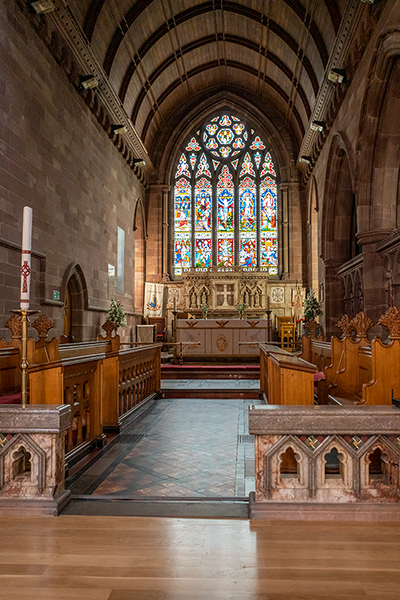 |
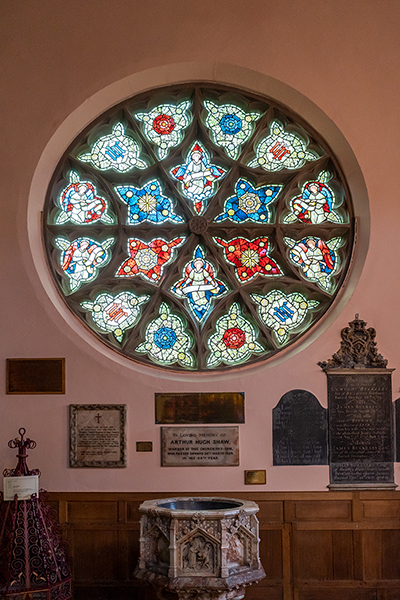 |
|
| Chancel and East Window (2023) | South Aisle Rose Window (2023) | |
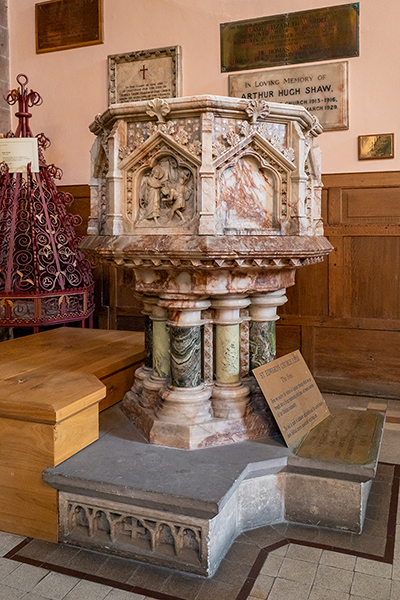 |
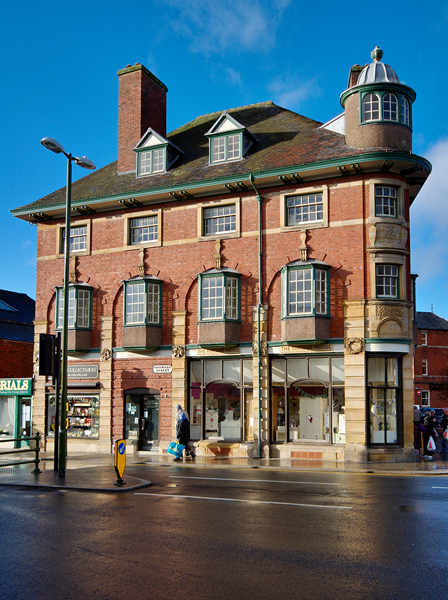 |
|
| Font (2023) | Vintage House, Haywood St. January 2014 |
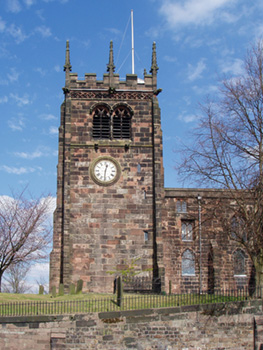 |
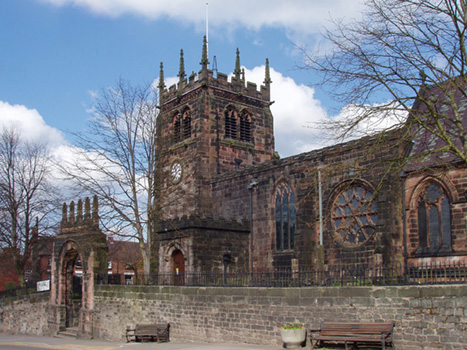 |
|
| Church Tower 8 Apr 2003 | South elevation showing South Aisle rose window. | |
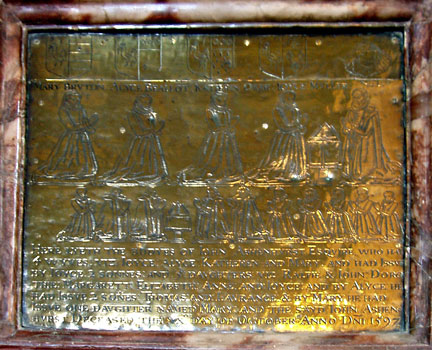 |
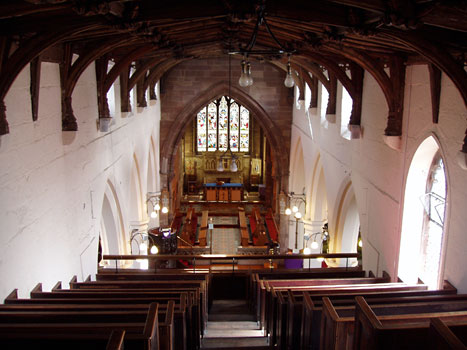 |
|
| The Ashenhurst Brass depicts four wives and ten children of John Ashenhurst who died in 1597 |
The nave from the back of the West Gallery | |
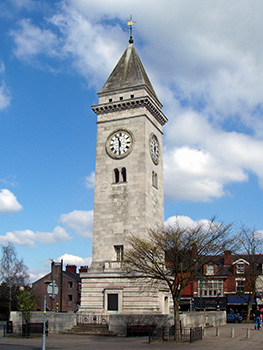 |
 |
|
| The War Memorial | Christmas scene in Leek indoor market | |
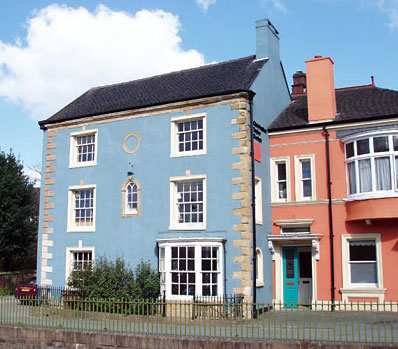 |
 |
|
| Clerke Bank, west of the church | Greystones, a late 17th century house. | |
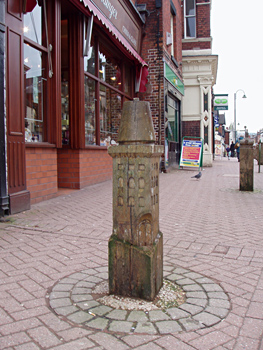 |
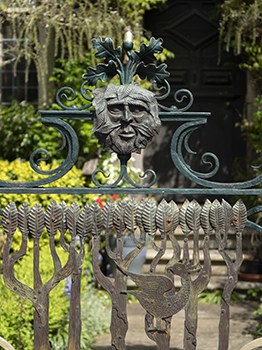 |
|
| One of several carved wooden bollards | Detail of the gate at Greystones | |
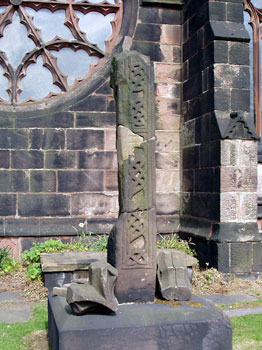 |
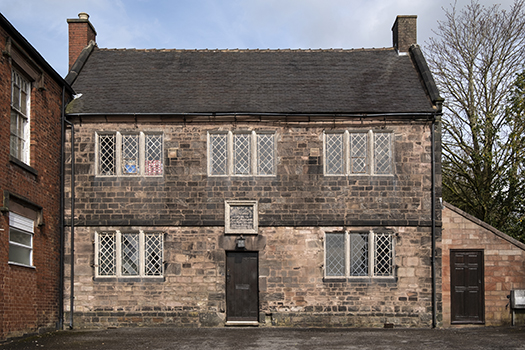 |
|
| A Saxon cross from the 8th century | Former Grammar School on Clerke Bank, erected by the Earl of Macclesfield, Lord Chancellor, 1725 (2021) |
Leek advertises herself as the Queen of the Staffordshire Moorlands. There was a church here is Saxon times and there are remains of two Saxon preaching crosses, one dating from the 7th and the other from the 8th century in the churchyard. Fragments of other crosses are found in the north west corner of the nave. My photograph of the Ashenhurst brass was not taken by standing on a step-ladder. It was taken from the ground but the perspective has been corrected by the wonders of computing.
The Abbey of Dieulacres was originally founded at Poulton in Cheshire in 1150 and refounded on the ouskirts of Leek in 1214 by Ranulph de Blundeville, the 6th Earl of Chester and Lord of the Manor of Leek. The abbey was the patron of the church and appointed the vicar from 1215 until the Dissolution of the Monasteries. The church and much of the town was destroyed by fire in 1297. A new church was completed in 1320. Edward The Confessor was the patron saint of England until the time of Edward III (1327-1377) who changed the patron saint to Saint George. The two great rose windows date from the period between 1450 and 1550 but the glass is later. The example shown above was designed by G. F. Bodley and the glass produced by the William Morris Company. The Rose Window in the south aisle was given by Sir Thomas Wardle, in memory of his wife. The East Window, shown above, is a memorial to Elizabeth Condlyffe who died in 1878. The top tier depicts Jesus flanked by the four apostles while below are Mary flanked by archangels and prophets. The roof of the nave dates from the early 16th century and the porch is mid 17th century. The arched doorway from the street to the churchyard was built in 1634.
During the English Civil War, Royalist troops held out in the church and it was damaged by cannon fire. Leek's role as a silk manufacturing town is believed to date to the arrival of French Huguenots in 1685. There are still mills to be seen around the town and there is the chemical works that was formerly Sir Thomas and Arthur Wardle's dye works.
In the Jacobite Rebellion of 1745, the Young Pretender came via Macclesfield to Leek on his way to Derby and he is reputed to have stayed at the vicarage. The Prettender's troops used the Saxon cross shown in the picture for target practice. Frenchmen taken prisoner in the Napoleonic Wars settled near the church at "Petty France". The population of Leek was about 1,000 in 1700 growing to 3,000 by 1800 and about 15,000 by 1900. The growth of population in the 19th century led to further church building with St. Luke's in 1848, St. John's in 1875 and All Saints in 1885. There was extensive restoration work on the church of St. Edward the Confessor in the middle of the 19th century. This resulted in the removal of the rood screen, the rebuilding of the chancel, a new font and pulpit. In 1956 a further restoration removed galleries from the sides of the nave.
Leek has strong connections with the Arts and Crafts Movement as in 1873, William Morris came to study dyeing and printing, staying with the Wardle family who were silk manufacturers. Lady Elizabeth Wardle founded the Leek School of Embroidery in 1879. All Saints church in Leek, built by Norman Shaw, between 1885 1887, has much of the stained glass designed by William Morris.
The town has one of the most impressive war memorials I have seen. The clock tower bears the names of major battles in the Great War. It was built in Portland Stone by Thomas Worthington and Sons of Manchester in 1923/4. The indoor market is a charming feature in this era of gigantic shopping malls and out-of-town retails parks. There is also an outdoor market down the main street on Wednesdays.
A Stroll around the Parish Church of St. Edward the Confessor, Leek,
a booklet available at the church.
The Buildings of England, Staffordshire, by Nikolaus Pevsner, Penguin,
1974, ISBN 0 14 071046 9
Leek Part 2.
Leek Part 3: The Nicholson Institute